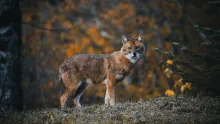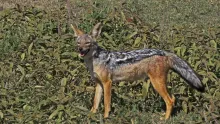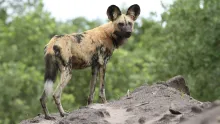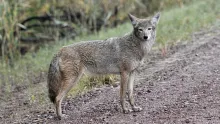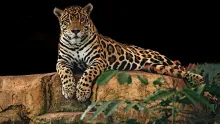Skip to main content
Introduction
- The Dhole (Cuon alpinus), also known as the Asiatic Wild Dog or Indian Wild Dog, is a highly social and cooperative canid.
- They are known for their distinctive whistling calls, which are used for communication within the pack.
- Dholes are apex predators and play a crucial role in maintaining the balance of their ecosystems.
Physical Characteristics
- Dholes have a slender, athletic build, with males w
General Information
- The Jackal is a medium-sized canine belonging to the genus Canis.
- There are three main species: the Golden Jackal (Canis aureus), the Black-backed Jackal (Canis mesomelas), and the Side-striped Jackal (Canis adustus).
- They are found in Africa, Asia, and southeastern Europe.
- Jackals are known for their intelligence, adaptability, and opportunistic feeding behavior.
General Information
- The Fennec Fox (Vulpes zerda) is the smallest species of fox in the world.
- It is native to the Sahara Desert and other parts of North Africa.
- Fennec foxes are known for their large ears, which help them stay cool in the desert.
- They are nocturnal, meaning they are most active at night to avoid extreme heat.
Physical Characteristics
- Fennec foxes weigh between 0.7 to 1.6 kg (1.5 to 3.5 lbs)
General Information
- The Arctic Fox (Vulpes lagopus) is a small, resilient mammal native to the Arctic regions of the Northern Hemisphere.
- It is well adapted to survive in extreme cold, with thick fur and a compact body.
- Arctic foxes are found in Alaska, Canada, Greenland, Iceland, Norway, Russia, and Sweden.
- They are opportunistic omnivores, feeding on small animals, carrion, and vegetation.
Physical Characteristics
Introduction
- The Red Fox (Vulpes vulpes) is the largest of the true foxes and one of the most widely distributed members of the Carnivora order.
- They are known for their reddish-orange fur, white underbelly, and bushy tail with a white tip.
- Red Foxes are highly adaptable and can thrive in a variety of environments, from forests to urban areas.
Physical Characteristics
- Red Foxes have a slender, agile bod
Introduction
- The African Wild Dog, also known as the African Painted Dog or Cape Hunting Dog, is scientifically named Lycaon pictus.
- They are known for their unique coat patterns, which are as distinctive as human fingerprints.
- African Wild Dogs are highly social animals, living in packs with complex social structures.
Physical Characteristics
- African Wild Dogs have a slender, athletic build, with males weighing between
Introduction
- Coyotes are medium-sized canines scientifically known as Canis latrans.
- They are highly adaptable and are found throughout North and Central America.
- Coyotes are known for their intelligence, resourcefulness, and vocalizations, including their iconic howls.
Physical Characteristics
- Coyotes have a slender, agile body, with males weighing between 20 to 50 pounds (9 to 23 kg) and females slightly smaller.
- Thei
Introduction
- Wolves are large, social carnivores scientifically known as Canis lupus.
- They are the largest members of the Canidae family, which includes dogs, foxes, and coyotes.
- Wolves are known for their strong pack behavior, intelligence, and adaptability.
Physical Characteristics
- Wolves have a muscular and streamlined body, with males weighing between 70 to 145 pounds (32 to 66 kg) and females slightly smaller.
- Thei
Introduction
- A Black Panther is not a separate species but a melanistic variant of big cats, primarily leopards (Panthera pardus) and jaguars (Panthera onca).
- Melanism is a genetic mutation that results in an excess of dark pigmentation, giving the animal a black coat.
- Black panthers are known for their mysterious and elusive nature, often associated with strength and stealth.
Physical Characteristics
- Black panthers have a
Introduction
- Jaguars are the largest big cats in the Americas and are scientifically known as Panthera onca.
- They are known for their powerful build, strong jaws, and distinctive rosette-patterned fur.
- Jaguars are apex predators, playing a crucial role in maintaining the balance of their ecosystems.
Physical Characteristics
- Jaguars have a stocky and muscular body, with males weighing between 120 to 250 pounds (54 to 113
